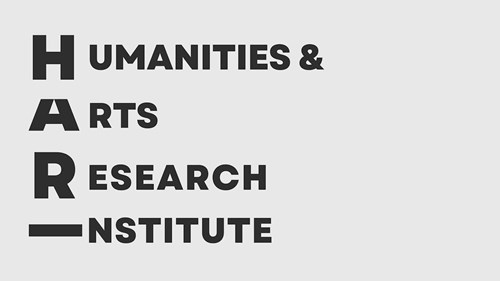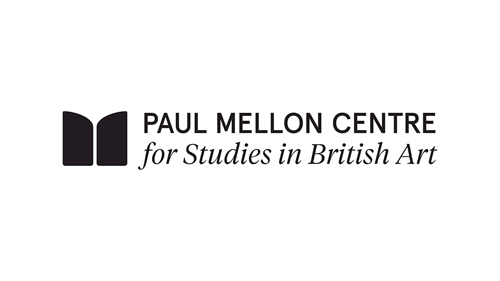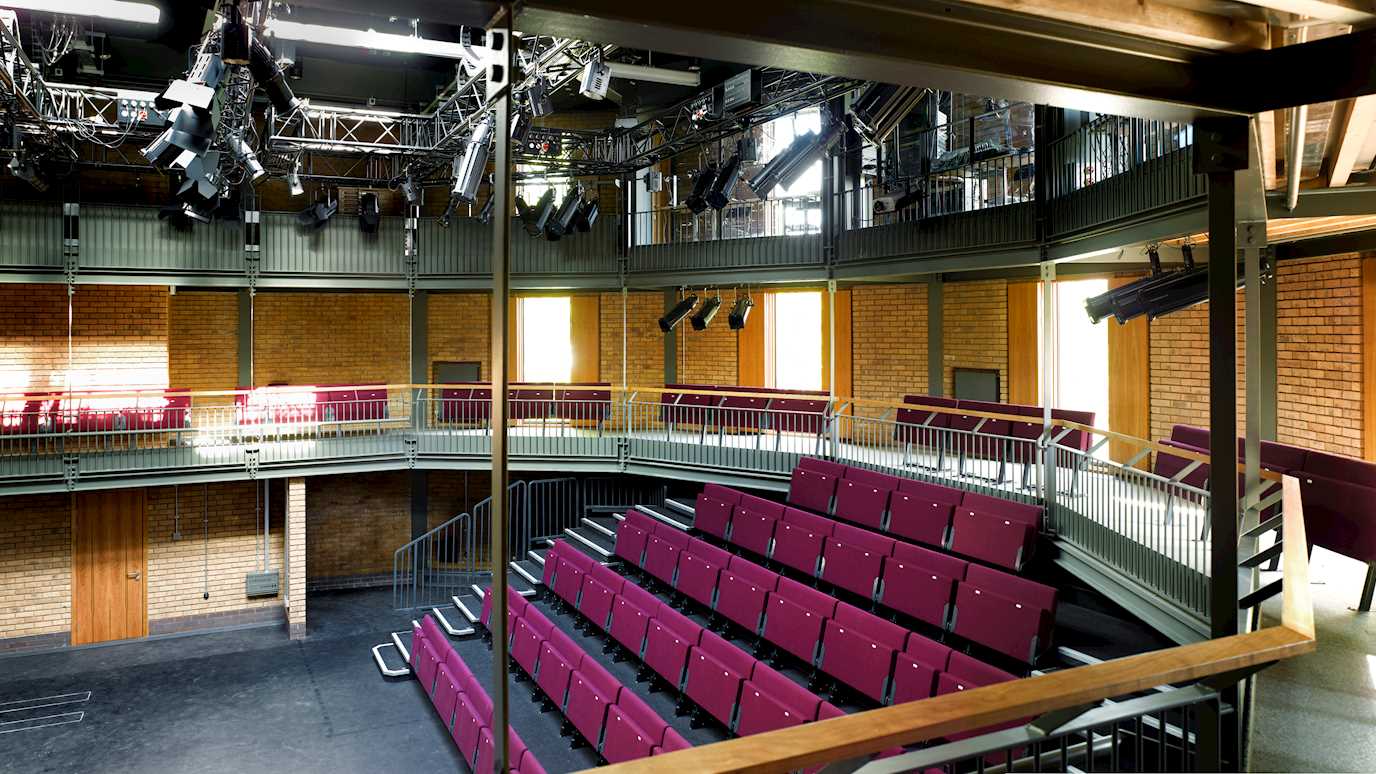Department of Drama, Theatre & Dance, Katharine Worth Building, Royal Holloway
Theatre Anthropology has expanded the definition of performance to recognise ‘production’ as it pertains both to theatre and associated media (i.e., theatre, film or television production) and the practice of creation in an artist’s studio (i.e., artistic production, commercial production), as well as how restored behaviour encompasses embodied technique (e.g., archaeological digs) and modes of spectator engagement in the everyday (e.g., the use of a pot). Ceramics (especially, though not exclusively, the pot) can be regarded as intrinsically performance-based objects because they hold or pour (often described as ‘performing’ a function), evince social status, express ideology, memorialise, and/or enact other functions ad infinitum. In this sense, ceramics are performing objects both in action and inaction, at home and/or in the museum.
Despite this duality, most discussions of performance concerning art practices have focused on exhibition, which has led to the analysis of new modes of display and spectator engagement (Bennett, 2013). Indeed, several essays in the important edited collection Contemporary Clay and Museum Culture (2016) observed how ceramic displays bridge the interior of the museum and the exterior world. Developed from the AHRC project Ceramics in the Expanded Field, the volume emphasised the blurring of boundaries and crossing of disciplines, as well as the activation of domestic environments (mostly within the sphere of the museum) and personal associations, as the site of and for curatorial and artistic intervention. Tessa Peters spoke astutely of ceramics occurring in a social field where artists might become the “producer of situations” (101). However, the ways in which ceramic objects activated modes of performance, especially in the everyday, were glossed. In reflections upon his own practice, the US-based artist Anders Ruhwald observed how his intervention at the Saarinen House museum, Detroit, worked to “add further layers of experience of the place” (84), but such layers were not analysed in terms of site-specific performativity in the everyday nor within the museum frame. Elsewhere, curator Juliet Carey observed “the ephemerality of site-specific experience” (195) in ceramic installations, but without recourse to the social cues (performances) upon which ceramics might, in some instances at least, be conceptually dependent.
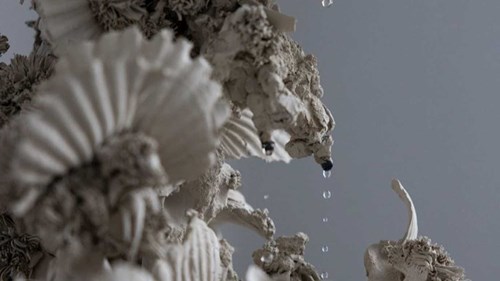
Phoebe Cummings, A Matter of Life and Death. Photo by Roberto Salamone.
It is tempting to locate the experiential dynamics of such installations within the domain of performance art. This arises from the fact that whilst performance art was initially rooted in a rejection of the marketisation of object art (Goldberg, 1979:98), the French artist Arnaud Labelle-Rojoux has tied performance art practices back to objects by tracing its roots in the readymade. As performance art evolved in the mid-1950s, so objects were incorporated into artistic practice to subtly allude to everyday experience (2009:44). By teasing out the subsequent implications of a collaborative and associative network between Robert Rauschenberg, John Cage, Merce Cunningham, Allan Kaprow, Tadeusz Kantor, and George Brecht, Labelle-Rojoux asserted that:
There is no essential difference between the object and the event. What is an event? A score made of actions or gestures borrowed from daily life. They possess neither expressive nor spectacular qualities. But this score, if it can be written down on paper […] and if it defines a few very brief and very open rules […] also sometimes has the appearance of a minimalist device like the series Chair-Events (1968) […] (57).
Chair-Events by George Brecht was an object-based performative and participatory installation featuring chairs and other objects. Such performance art scores and object-based installations, Labelle-Rojoux concluded, can be – and have been – monetised like any other form of object-based art. Like performance art, ceramics exhibits liminal vocabularies and modalities, existing betwixt and between the object and performance, the institutional and the domesticated, the spotlighted and the mundane. Unlike performance art, however, ceramics has a history of thousands of years.
The blurring of the divisions between object art and performance art has had important ramifications for a consideration of object-based art and its display. In Theatre, Exhibition, and Curation: Exhibition and Display, Georgina Guy conceived of exhibition as “a model of performance which flickers between material object and performed enactment” (2016:183). However, by privileging the exhibition as the primary site for the activation of objects via the analysis of performance art, the complexities produced by ceramic form and its socio-cultural meanings are elided. Catherine Wood, for instance, has proposed a:
relationship between the immortal deadness of the art object within a museum or gallery display and the “world as a corpse”, revealing the psychological continuum that binds them. […] In this way of looking at things, the object is simultaneously a relic (as evidence of prior action) and a prompt or catalyst (pointing towards its potential to be utilised in an action that is yet to be performed) (2009:89).
The “deadness of the art object”, Wood argued, enables perception of the transitory nature of our own existence; for we exist long enough to witness only a short moment in the perpetual journey of the archived object. Yet, one of the characteristics of ceramics – especially in the form of pottery – is its performance as a part of everyday life in domesticity, not just the museum or gallery. How can ceramics as objects be considered in any sense ‘dead’ when they are fundamental to everyday life? If one contemplates a jug as decorative rather than a functional object has it now become ‘dead’? Does the archiving and exhibiting of ceramics simply equate them with the “deadness” that Wood attributes to archived objects? The intrinsically liminal and socially relational qualities of ceramics require different frames of reference that work with, but also extend beyond, the vocabularies of performance art in exhibition.
Tim Ingold has called for the separation of material from materiality which, in turn, draws attention to the fundamentally relational nature of all material. As a starting point, Ingold proposed that:
Bringing things to life […] is a matter not of adding to them a sprinkling of agency [i.e., through exhibition] but of restoring them to the generative fluxes of the world of materials in which they came into being and continue to subsist. This view, that things are in life rather than that life is in things, is diametrically opposed to the conventional anthropological understanding of animism, [… which] entails the attribution of life, spirit or agency to objects that are really inert (2007:12).
Instead, Ingold argued that materials are bound to the “regenerative power of […] circulatory flows which, in living organisms, are bound into tightly woven bundles or tissues of extraordinary complexity” (2007:12). This resonates with what Eleanor Margolies has described as “scenic writing”, where “the object has an independent scenographic role” and where time can be “encrusted in or embodied by those objects” (137). Exhibitions thus become one, but only one, means of highlighting specific kinds of circulatory flow. In this regard, exhibitions are no more or less agential (or, for the purposes of this call, ‘performative’) than the material from which the objects themselves are made. Ingold thus concludes that:
the properties of materials, regarded as constituents of an environment, cannot be identified as fixed, essential attributes of things, but are rather processual and relational. They are neither objectively determined nor subjectively imagined but practically experienced. In that sense, every property is a condensed story. To describe the properties of materials is to tell the stories of what happens to them as they flow, mix and mutate (2007:14).
In placing emphasis upon a relationism of material to be experienced – as opposed to objects and their materiality, and which is activated only in contexts of display – key assumptions about the nature of objects are challenged. Animism can be discerned in the way in which material “unfolds in relation to the beings that make a living there” (2007:14). Consequently, the ceramic object, as comprised of material, can never be ‘dead’ because it is always enmeshed into a relational network of which exhibition is only one (relatively small) part.
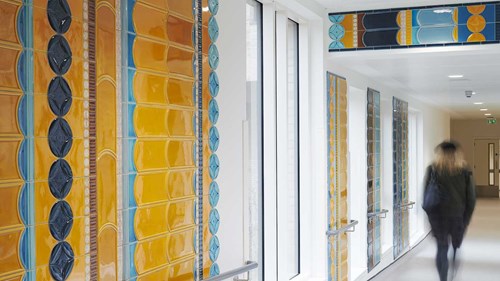
Frances Priest, Tiled Corridor in the Royal Edinburgh Hospital (2019). Photograph by Shannon Tofts.
Ingold’s conception of material as an unfolding relationality connects with other contemporary theories of material and their deployment in performance. Andrew Sofer, for instance, has observed four key trends in recent thinking about performing objects: thing theory (where subject-object relations alter a non-descript object into a thing), object-orientated ontologies and posthumanism (object-object relations move beyond subjectivity), new materialism (the materials of object are imbued with their own agency), and actor-network theory (objects become components in a connective network that blur boundaries between them) (Sofer, 2016:674). All these perspectives are in some form or other contingent upon relationism. Ingold’s analysis also resonates with Andrew Benjamin’s description of materiality as a continuum where “production and materiality is always connected” so that “matter will become ‘mattering’” (Benjamin, 2010:98). The conjoining of production and materiality into a present tense verb (“mattering”) renders objects as active material stories of emergence and mutability, connecting them to performance in its widest anthropological sense.
Considering the above, this symposium proposes that ceramic objects perform both in and outside exhibition, and that ceramic objects lend themselves to a particularly rich form of relational performance analysis because of their material and formal variety, and their cultural ubiquity across history. Ceramics can be comprised from a mixture of natural and manufactured material and may range in form from a functional pot to an abstract sculpture. Ceramics can also be exhibited in infinite contexts in both fired and raw clay states. Ceramics thus has the potential to challenge performance-based dichotomies of object-based and performance art, as well as a dependency upon exhibition for the activation of performance. To do so is to challenge Nicolas Bourriaud’s relatively recent notion of relational aesthetics (which foregrounded art as a site for the engineering of social relations) in contemporary art, for ceramics has been a relational form for thousands of years, bound to processes of social consumption, interaction, communal belonging, and identity.
Proposals from practitioners or academics in any relevant field (e.g., Theatre Studies, Film and TV Studies, Art and Design, Archaeology, Museum Studies) are sought in the form of papers or discussions of practice (length 20 minutes) which might address some of the following suggested key themes:
- Ceramics as intrinsically experiential and performative
- The creation, use, and display of ceramic practices as the basis for performance
- The maker as ‘actor’ for an ‘audience’ (which might extend to the display of work, as well as the conventions underpinning public demonstrations of technique)
- Exhibiting the everyday, as a part of everyday life, through ceramic practices
- The significance of relational art practice(s) to ceramic objects
- Ceramics as a dis/embodied site for the exploration or contestation of socio-political and economic histories
- The foregrounding of material and process in contexts of display
- Exhibition and curatorial engagement with the concept of the performing object
It is anticipated that an edited volume will be developed from the symposium proceedings.
The deadline for proposals has passed, but you can still book to attend the symposium. The deadline for booking a place is Sunday 14 April by 9pm.
To book your place on the symposium, please click here.
If you have any special dietary requirements, please contact the symposium convenor, Ashley Thorpe, here.
To download the symposium programme, please click here.

Mella Shaw, still from the film Sounding Line. Image by Rowan Aitchison.
References
Barad, K. “Posthumanist Performativity” Toward an Understanding of How Matter Comes to Matter,” Signs, 28.3 (Spring 2003), 801-31.
Bennett, S. Theatre & Museums. London: Red Globe Press, 2012.
Bourriaud, N. Relational Aesthetics. Translated by S. Pleasance and F. Woods. Dijon: Les presses du réel, 1998.
Brown, C., Stair, J., and Twomey, C (eds.). Contemporary Clay and Museum Culture. London & New York: Routledge, 2016.
Goldberg, R. Performance Art. New York: Harry N. Abrams, 1979.
Guy, G. Theatre, Exhibition, and Curation: Exhibition and Display. London & New York: Routledge, 2016.
Margolies, E. Props. London: Red Globe Press, 2016.
Ingold, T. “Materials against materiality,” Archaeological Dialogues, 14.1, 1-16.
Labelle-Rojoux, A. "'Hey! Look, it's an Egg Cup'. Or the Object in Action Art of the 1960s." In Not to Play with Dead Things. Edited by Eric Mangion. Nice: JRP Ringler, 2009, 42-60.
Sofer, A. “Review Essay: Getting on with Things: The Currency of Objects in Theatre and Performance Studies,” Theatre Journal, 68.4 (December 2016), 673-84.
Wood, C. “The Things that Dreams are Made of”. In Not to Play with Dead Things. Edited by Eric Mangion. Nice: JRP Ringler, 2009, 84-91.









